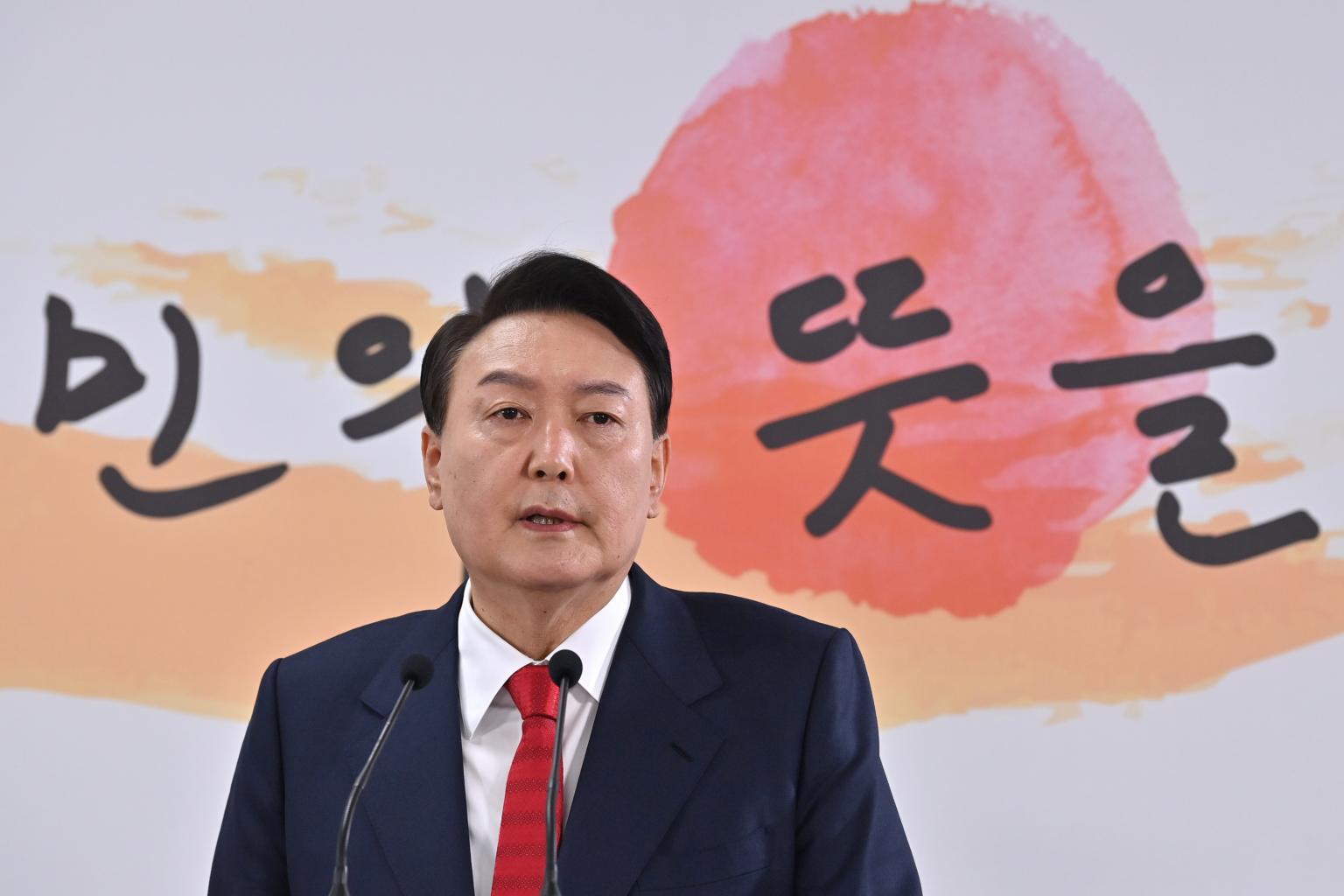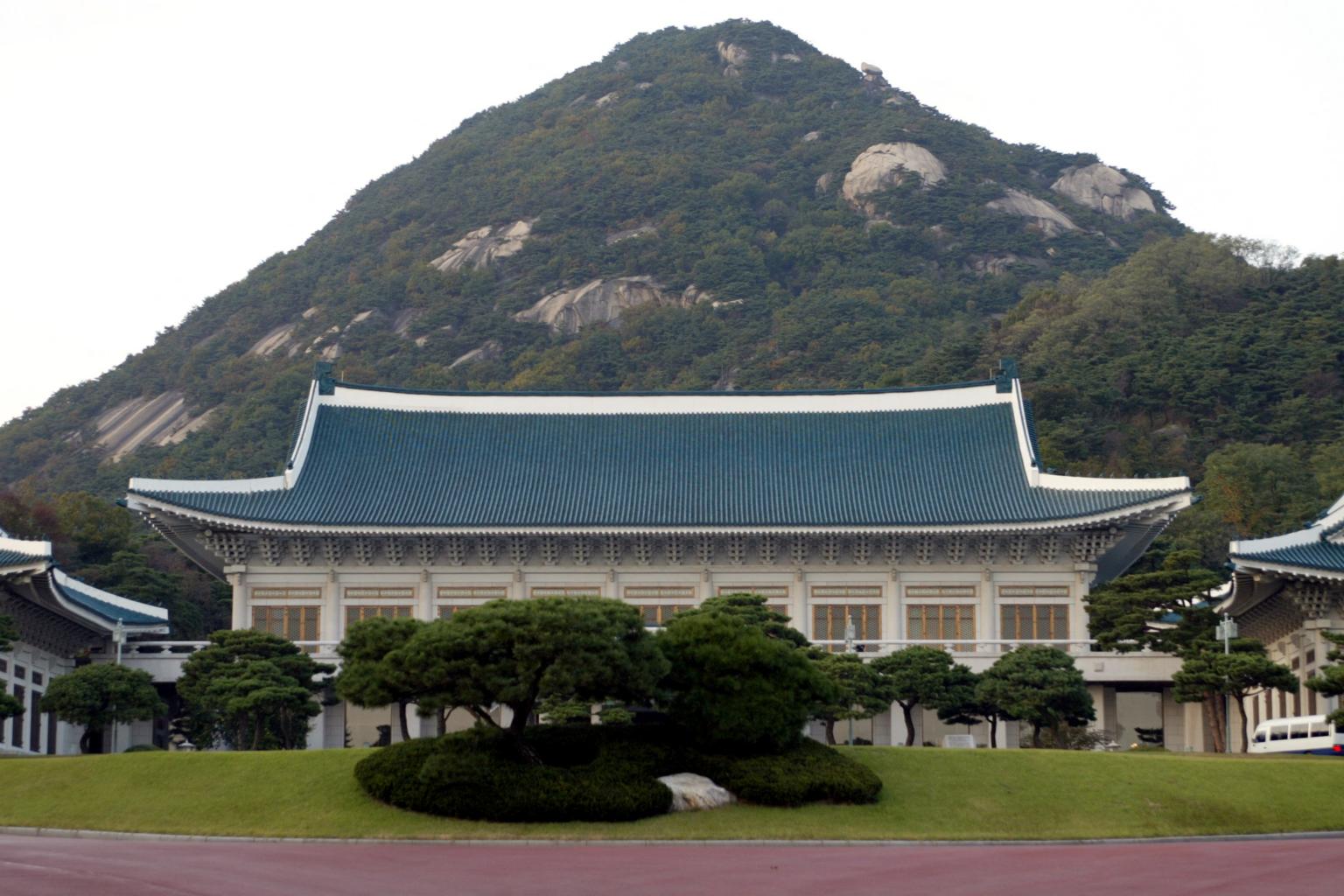South Korea's incoming leader not keen to work out of Blue House
Sign up now: Get ST's newsletters delivered to your inbox

President-elect Yoon Suk-yeol had criticised the Blue House as a symbol of an "imperial presidency".
PHOTO: EPA-EFE
Follow topic:
SEOUL - South Korean presidents have for the past 70 years lived and worked in the Blue House, which is located at the foot of a mountain north of Seoul.
Things are about to change. Fulfilling a campaign promise to get closer to the people and move out of the secluded location, President-elect Yoon Suk-yeol announced on Sunday (March 20) that he would work instead from the building housing the Ministry of National Defence - in the Yongsan district, about 6km south of the presidential mansion.
He had criticised the Blue House as a symbol of an "imperial presidency" and said he planned to decentralise it.
But the decision to relocate has run into opposition with Mr Yoon's transition team and the outgoing Moon Jae-in administration at loggerheads.
Mr Moon's office on Monday warned that a hurried move could "cause a security vacuum and confusion", as it would involve the relocation of three separate bodies - the Defence Ministry, the Joint Chiefs of Staff and the Blue House crisis management centre - before Mr Yoon's inauguration on May 10.
"Now is the time to unite security capabilities, as the security crisis on the Korean peninsula is escalating," said Mr Moon's spokesman Park Soo-hyun, referring to North Korea's accelerated pace of missile testing in recent months.
The Moon administration and Mr Yoon's transition team are also said to be at odds over other issues such as the pardon of former president Lee Myung-bak and appointments to key portfolios. As a result, a meeting between Mr Moon and Mr Yoon, who represent opposing political camps, was cancelled at the last minute.
The ruling Democratic Party has also criticised Mr Yoon's decision on the Blue House, calling it hasty and absurd.
Some members of the party noted that the Defence Ministry was also located in a secluded spot due to security reasons and was no more accessible than the Blue House, while others questioned if the decision was made on the advice of shamans ostensibly because it brought bad luck to its occupants.
Many South Korean presidents who used the mansion in the past have come to a sorry end - from impeachment to suicide, assassination and a life behind bars.
Once part of the ancient royal palace during the Goryeo (918-1392) and Joseon (1392-1910) eras, the Blue House compound was occupied by the head of Japan's government during colonial times (1910-1945) and then South Korea's first president in 1948.
Its distant location has often led to criticism that the president lives in an ivory tower and is out of touch with the people.

Mr Moon had also pledged to move his office out of the Blue House to Gwanghwamun - a business district in front of the presidential mansion - to "get closer to the people" but failed to do so due to security and other considerations.
There is also no public consensus on Mr Yoon's planned move, which will cost 40 billion won (S$44.6 million).
A survey by pollster Mediatomato released on Tuesday showed that only one-third of 1,018 respondents supported the move, while 58.1 per cent felt the presidential office should remain in the Blue House.
Separately, a petition posted on the Blue House website to stop the relocation has drawn more than 450,000 signatures in six days.

Experts remain split on the relocation with some saying the time is right and others believing the money could be better spent on stimulating South Korea's post-pandemic economic recovery.
Law professor Lee Jae-min of Seoul National University noted that Seoul had developed so much in the past few decades that the old city centre, where the Blue House is located, is now a "far corner".
"The current location severs the president's relationship with the general public because it's so remote," said Prof Lee. "Finding a new location and dealing with all the practical and logistical headaches is one thing... implementation may require further reflection and contemplation, and thorough preparation."
During his campaign, Mr Yoon promised to relocate the presidential office to Gwanghwamun and "return" the Blue House to the public by turning it into a park. But the Defence Ministry building was eventually chosen as it would cost twice as much to move to the Gwanghwamun site - which houses the Ministry of Foreign Affairs.
Mr Yoon said during a press conference on Sunday that it was a difficult decision but he made it "for the future of the country".
"I ask the people to understand that this is not simply a relocation of space but my determination to properly serve them and fulfil my promise to them," he said.
Mr Yoon also said he was aware of concerns that it may be a rushed move with only 50 days to go before his inauguration. "But once we enter the Blue House, it will become even more difficult to break free from the symbol of imperial power," he said.
But to move ahead, Mr Yoon's team needs to secure funds from the Moon administration, which seems reluctant to lend support and Mr Yoon's spokesman has said there is "zero chance" of him moving into the Blue House.
Instead, the next president will "fully open the Blue House" to the public on May 10 and continue to work from his temporary office located in Gwanghwamun until a solution is found.

